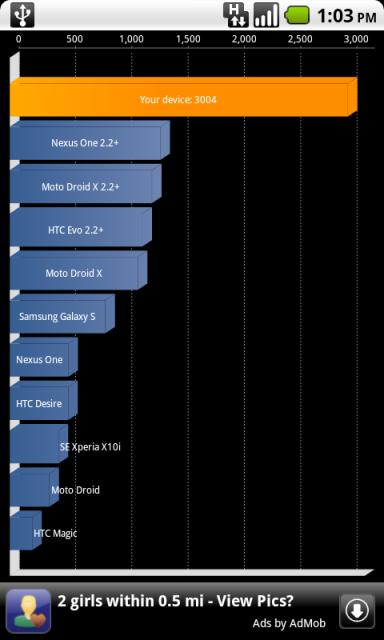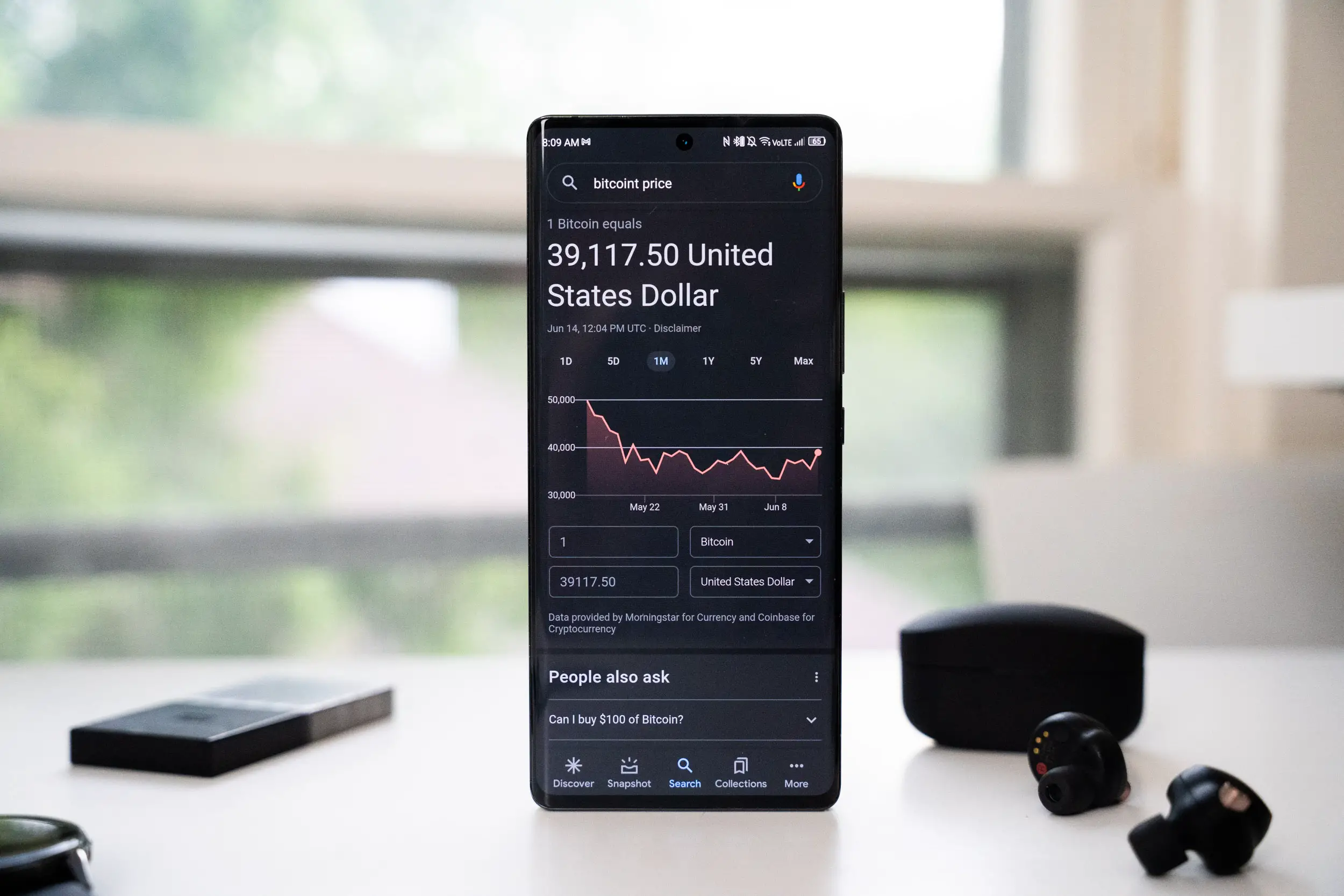Now, I know that Quadrant isn’t the be-all end-all for viewing performance on any given device and some of you scoff its existence. But high numbers are high numbers so long as they come from an unbiased source, and this delivers.

Created by XDA member ownhere, Data2Ext messes around with some of the partition settings to create a loopback; this increases the performance of write and saves power. Nothing but good stuff. This hack was created on and for the HTC Desire and is currently being ported over to the Nexus One.
[via Android Police | XDA]










I’m calling BS… that’s the same screenshot from the 1.8 ghz kernel on the g2 forum. Look at it yourself: http://forum.xda-developers.com/showthread.php?t=839687.
Besides, internal NAND will always be faster than an sdcard. That is why I never used apps2sd on my old g1.
Hmm, at first glance, without checking the technical details, this sounds like it does something similar to the ext2 lag fix available for the Samsung Galaxy S phones.
Wow, would love to see how the Galaxy S compares.
I was saying back during the “lag fix” for the Galaxy S that Quadrant clearly puts too much weight on the I/O tests. It’s pretty ridiculous.
I mean, when a device like the SGS gets double the score of the Droid X even though they share a very similar CPU and GPU, there’s clearly a problem. It would be like if RAID0 doubled your PCMark score on a PC…
Hmmmmm where did my first reply go? I linked to http://forum.xda-developers.com/showthread.php?t=839687 to show that the screenshot was from a completely unrelated kernel for the g2…..
“2 girls within .5 mi – view pics”
ads by admob….. fail… lol
Like said before, this is a moderate performance increase on the Galaxy S which was painfully slow to begin with. It basically feeds quadrant what it wants to see. Cyanogen did something almost identical to prove how sucky quadrant and I/O was.
The real fix for the Galaxy S is a full filesystem replacement, and that lowered the quadrant scores from the fake filesystem loop back.
I asked this a few months ago when the Galaxy S line hit the US…if that ext thing could be done on other phones…
.
Looks like the answer is yea…yea I think most of us can agree Quadrant has been reduced to nothing but a gpu benchmark now…lol Out the box benchmarks….a very shaky maybe..
.
@Eric
.
I hope Samsung did that with the Nexus S and their future phones, tablets. Seeing how they put in new GPS and Wifi chips in the Nexus S tells me they are listening to customers, surfing the forums…maybe….
.
Software updates….thats another story….lol
@QuantumRand
The GPU on the Galaxy S is *twice* as powerful as the one on the Droid X, which pulls a lot of weight in Quadrant even though CPUs comparable.
If you look at the benchmark breakdowns on the full version of Quadrant, and take I/O results out of the picture, the Galaxy S still beats up on the Droid X, lagfix or no lagfix, based on it’s much higher 2d/3d graphics score.
That said, nobody should put too much weight in benchmarks alone.
I’m suprised how many commenters (and even the article) understand how bad Quadrant is. Usually everyone just praises the results and I’m the first to mention that Quadrant scores don’t really reflect real world speed. :D
how can it to be done
Since the Android market is evolving so fast and new chips appear every few months, these benchmark tools are pretty useless since they aren’t optimized for the new chips. This is why Tegra 2 scores 2x less than Hummingbird GPU in Neocore, even tho it has 50% higher FPS when actually playing a game like Quake 3. Ridiculous.
http://images.anandtech.com/graphs/graph4054/34575.png
http://images.anandtech.com/graphs/graph4054/34576.png
@QuantumRand
you need to go read up on cpu and gpu architecture between the Snapdragon and Hummingbird and the GPU’s in each package on the Galaxy S and DroidX. they are quite different. The 1Ghz clock speed means pretty much nothing. Thats what Verizon uses to sell phones to people who think the “Ghz” makes all the difference…LOL
oh yeah, btw……the Galaxy S has had the Ext2 feature for months now…..this is an old method of increasing performance that just finally got “ported” to the HTC Desire
@james
are you saying that the Droid X has a hummingbird processor? If so, note that all Motorola Droid phones use TI OMAP processors, not Humminbird processors by Samsung
It really does cheat the quadrant scores. In fact if you look at it, it really affects so much more.
@james I think your saying that droidx uses an a first gen snap dragon processor um not true it uses the ti omap processor which is comparble to hummingbird. I do hate how galaxy s phones are said to be so fast when I had a vibrant running 2.2 the gpu always scores lower in frames per second to my g2 and the cpu isn’t way slower but it is slow enough to notice even. Real world use Its just not all that impressive
@Moses There is something wrong with your Vibrant.
If the Galaxy S isn’t impressive in day to day use then the g2 isn’t either. Neither is the desire z, hd or any other android device available.
Galaxy S has been doing this since late summer…..
Just wanted to note that I’ve experimented with an Ext2 partition on my Android phone (Samsung Moment) and read the progress and results of this on the SDX Developer forums. This makes a HUGE performance boost, very noticeable. Problem is, I guess Ext2 doesn’t have journaling. The down-side to this is if your phone shuts off improperly (pulling the battery, quickboot, anything other than the proper power off cycle) some data can be corrupted – an app might begin force closing or go missing, system files could get messed up, etc. Though I’m not familiar with XDA’s version to this, they might have found a work-around to these problems as apposed to the work on SDX.
@JrzDroid no, thats not at all what i said, re-read my post please, i said there’s significant difference between the Snapdragon and Hummingbird packages, enough so that one is faster than the other at the same 1Ghz clock speed. Architecture is what matters, among other things.
@Moses the Droid X uses the Snapdragon CPU which is older architecture than Hummingbird, but the real major difference is the Power VR SGX540 GPU in the Hummingbird package within the Galaxy S phones. The Snapdragon package in the Droid X utilizes the SGX530 GPU, which in the TI OMAP3630 is a slower package at the same 1Ghz clock speed.
see this article for architecture info on the DroidX
http://www.anandtech.com/show/3826/motorola-droid-x-thoroughly-reviewed/4
here’s some rough figures for GPU types
Here is a GPU comparison for some of the leading smartphones:
Motorola Droid: TI OMAP3430 with PowerVR SGX530 = 7-14 million(?) triangles/sec
Nexus One: Qualcomm QSD8x50 with Adreno 200 = 22 million triangles/sec
iPhone 3G S: 600 MHz Cortex-A8 with PowerVR SGX535 = 28 7 million triangles/sec
Samsung Galaxy S: S5PC110 with PowerVR SGX540 = 90 million triangles/sec
I don’t know about the rest of you but some coworkers have the G2 and Droid X and neither of them are as fast as my Vibrant. They both operate slower in screen transitions as well as opening apps and that was before I rooted, EXT2 lag fix and put TW’s Fusion 1.2 rom on my phone. My VIbrant destroys any phone in a side by side comparison that I have seen. Team Whiskey FTW
Holy Cow!!!
2 Girls within .5 miles? Hurry up and click it!